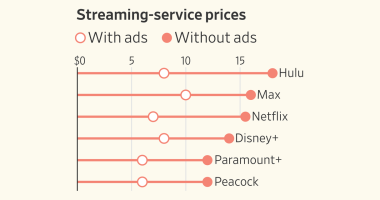
The number of people filing for unemployment benefits is estimated to have held near five-decade lows last week as firms struggle to remain fully staffed amid a resurgent pandemic.
Economists surveyed by The Wall Street Journal expect Thursday’s Labor Department report to show initial jobless claims, a proxy for layoffs, totaled a seasonally adjusted 195,000 for the week that ended Jan. 1. That would keep the four-week average for claims, which smooths out volatility, near last month’s level, the lowest since 1969. The claims data will be released at 8:30 a.m. ET.
Jobless-claims data can be volatile around the turn of the year and is adjusted to compensate for seasonal fluctuations, such as the end of temporary holiday jobs.
The labor market’s recovery from the worst of the pandemic could be threatened by the rapid rise in infections over the past month from the Omicron variant of Covid-19. But with job openings at record highs and an unprecedented number of Americans quitting their jobs in recent months, including 4.5 million in November, employers may bear the brunt of the impact from another season of public-health disruptions.
“Employee confidence is extremely high; there are so many choices,” said Paul McDonald, senior executive director at staffing firm Robert Half International Inc. “The demand for skilled talent is unprecedented right now.”
There have been more than 10 million job openings every month since June 2021, according to data from the Labor Department and jobs site Indeed. The imbalance between job seekers and open jobs has gotten so extreme that in November there were roughly two available unemployed workers for every three openings.
Ahead of Friday’s jobs report, which economists expected to show employers added around 422,000 jobs last month, up from 210,000 in November, any softness in the hiring numbers can be attributed to the “lack of available workers rather than any weakness in demand for staff,” said James Knightley, chief international economist for ING Bank.
Policy makers and investors will scrutinize Friday’s report for the share of the working-age population that is either employed or seeking employment, known as the labor-force participation rate, as a gauge of the labor market’s continued recovery. While it rose in November to 61.8%, it remains below the 63.4% rate in January 2020 ahead of the pandemic taking hold in the U.S. The unemployment rate dropped to 4.2% in November, from 4.6%, as more people entered the workforce.
Continued pandemic-related disruptions are a major impediment to workers rejoining the workforce, especially child-care shortages, unpredictable school schedules and, especially for older workers who may have retired early, fear of infection. Omicron-related closures of several major school districts this week won’t show up in the December jobs report but could have ripple effects in the coming weeks, especially if virus caseloads continue to surge.
Employer vaccination mandates may also result in some workers leaving jobs and applying for unemployment benefits. Several Republican-led states, including Florida, Missouri and South Carolina, have put in place or are considering policies that would allow workers who refuse to comply with their employer’s Covid-19 vaccination mandate to receive unemployment benefits.
In Kansas, which has implemented a policy that both allows for private vaccine mandates and allows the unvaccinated access to unemployment insurance, the state’s chamber of commerce has raised concerns about the potential costs, estimating that the state could have to pay as much as $5.6 billion from its unemployment insurance trust fund if all unvaccinated employees at affected employers were laid off due to vaccine refusal.
Still the availability of jobless benefits for unvaccinated workers didn’t appear to cause an increase last month in claims, which are at historic lows.
Courts have previously upheld the rights of both public and private employers to impose vaccine mandates. On Friday, the Supreme Court will hear arguments related to the Biden administration’s national mandate for private employers that have 100 or more employees.
While companies wait for the high court’s decision, companies should communicate about the possibility of mandates as clearly as they can, Mr. McDonald said.
“Employees get jumpy, nervous, and start to quit when they don’t hear a clear message from their employers,” he said.
Write to Gabriel T. Rubin at [email protected]
Copyright ©2022 Dow Jones & Company, Inc. All Rights Reserved. 87990cbe856818d5eddac44c7b1cdeb8








